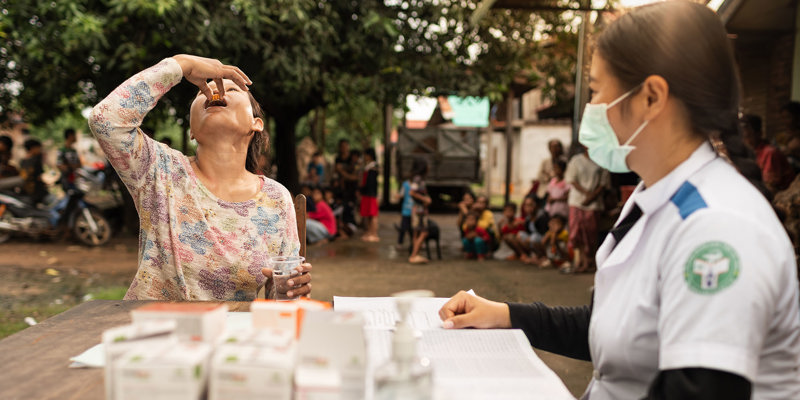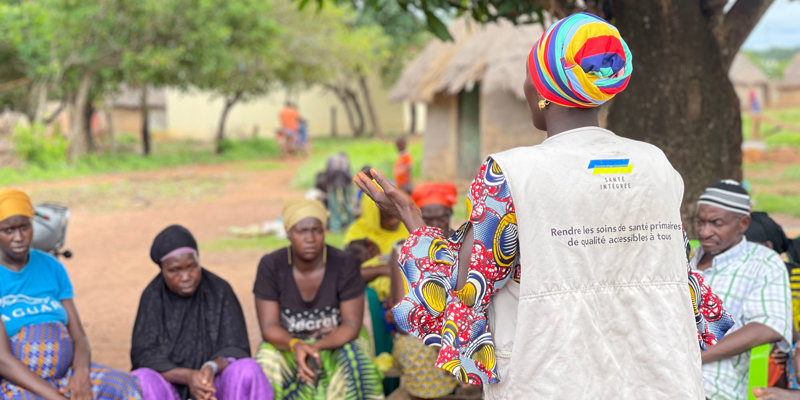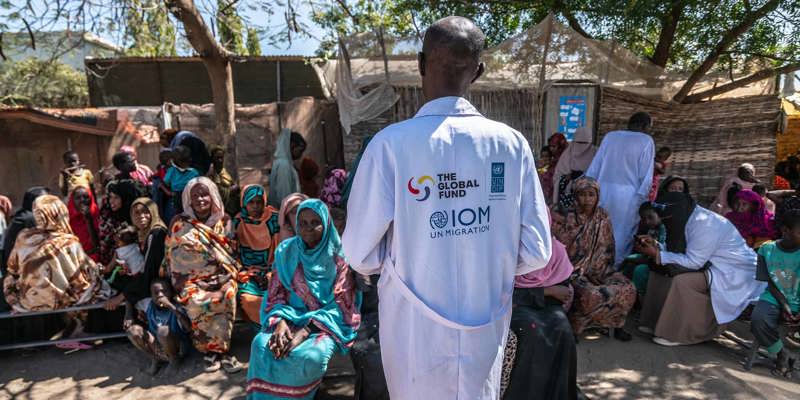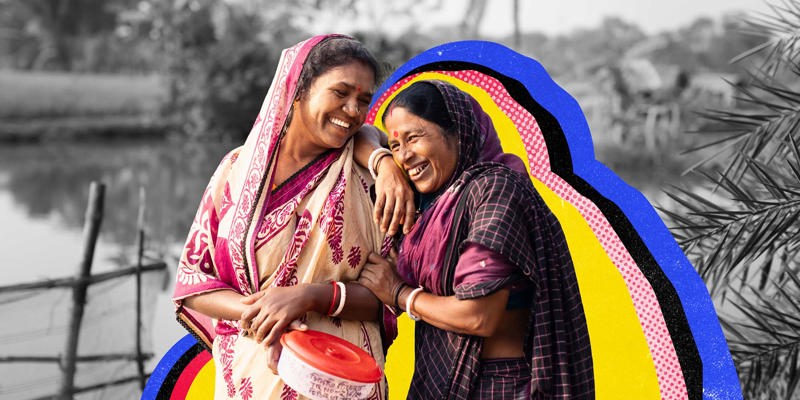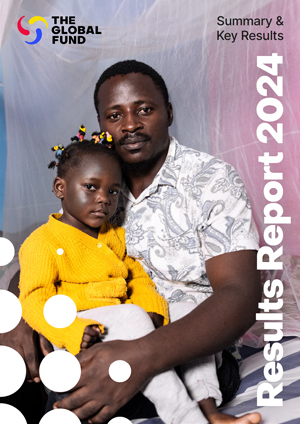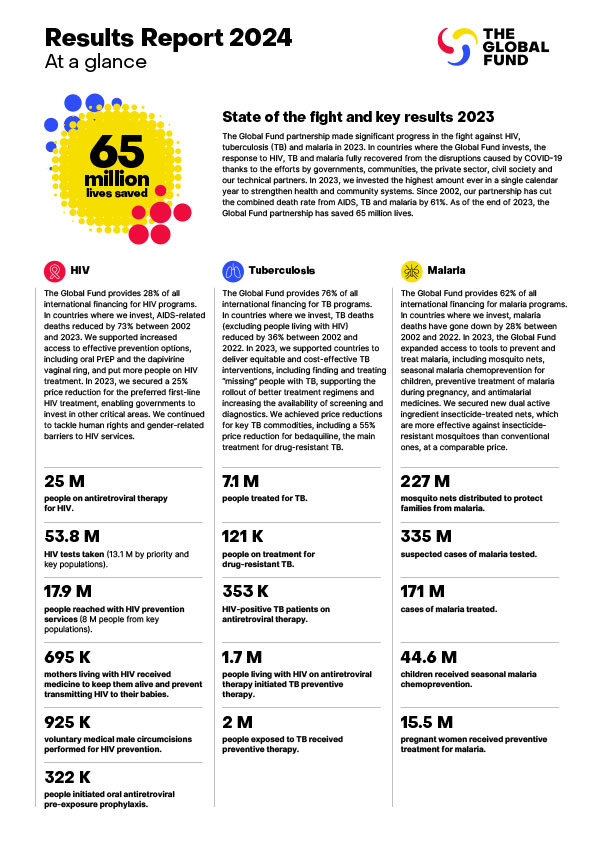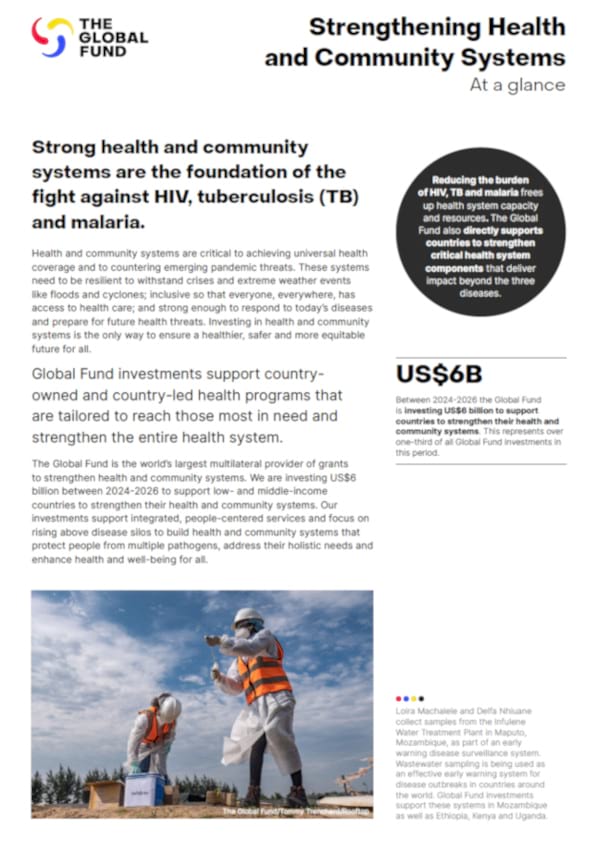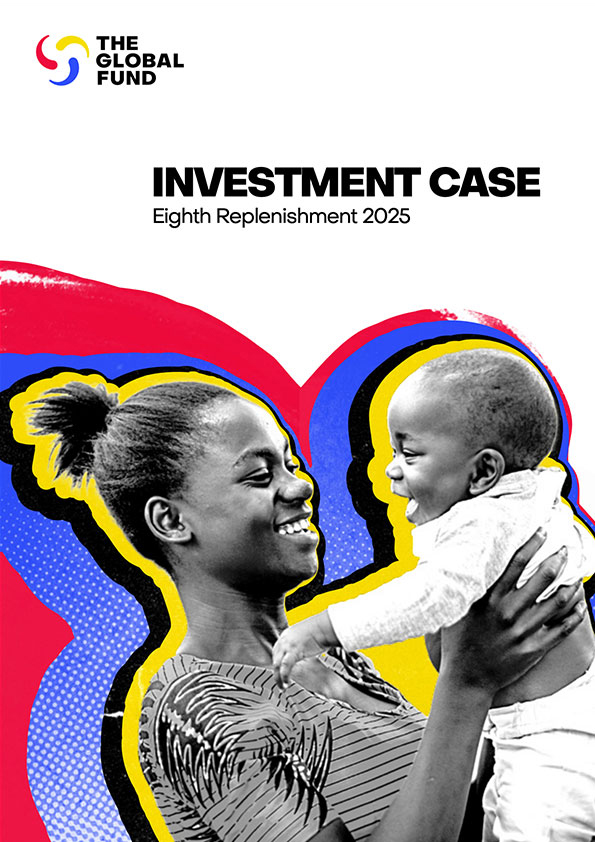Namibia and the Global Fund Sign US$100 Million Grant Agreement
09 July 2013
WINDHOEK, Namibia – The Global Fund to Fight AIDS, Tuberculosis and Malaria today signed agreements with Namibia for US$91.6 million to further support the national HIV response and US$8.5 million for malaria programs.
“We are very pleased to be signing these grants, which will allow us to continue to improve the quality of health of our people in Namibia,” said Dr. Richard Kamwi, Minister of Health. “The Global Fund continues to be an important partner in our country, and we are committed to continue investing in this fight. Our government is currently funding 75 percent of ARV treatment and we thank the Global Fund for funding the remaining 25 percent. Thanks to this support we were able to reach 85 percent coverage in March last year.”
The HIV grant signed today amounts to US$91.6 million. Another grant for US$19 million will be signed next week. Programs supported by these grants will be implemented jointly by the Ministry of Health of Namibia and NANASO, a Network of AIDS Service Organizations whose main focus is prevention and care.
“This is an important milestone for Civil Society in Namibia,” said Mr. Sandie Tjaronda, Executive Director of Nanaso. “It symbolizes not only global solidarity but the need for strengthened collaborations to record more success stories in the national response. HIV and AIDS can be concurred and there is no appropriate time than now.”
The program will focus on high impact interventions including treatment, care and support, Prevention of Mother to Child Transmission of HIV, scaling-up voluntary male medical circumcision, basic prevention for men who have sex with men and sex workers; and cross-cutting activities such as strategic and targeted behavioral change communication, HIV counseling and testing and condom promotion and distribution.
“Namibia is a great example of a Global Fund partnership at work,” said Lelio Marmora, Head of Africa and the Middle East for the Global Fund. “Government, technical partners, civil society, and bilateral agencies all came together to ensure that high impact interventions were included and that funding and programmatic gaps were addressed. We want to thank everyone for their commitment to the process.”
Whereas the 13.4 percent HIV prevalence in the general population in the country is one of the highest in the continent, Namibia has made important progress showing a declining trend in new infections: from an estimated 10,000 in 2008 to 8,000 in 2011. Namibia has also succeeded in reducing mother-to-child transmission of HIV, with 5 percent of infants born with HIV in 2012.
Regarding malaria, Namibia has shown remarkable progress with mortality declining from 1,700 deaths in 2001 to 36 deaths in 2011. Malaria out-patient cases have fallen from 521,067 cases in 2001 to 14,406 cases in 2011.
The country is progressing from malaria control to malaria pre-elimination, faster than anticipated. Namibia is already ahead of targets established in a National Strategic Framework 2010 – 2016.
The main interventions include strengthening the surveillance system, combining prevention strategies of Indoor Residual Spraying in high-transmission areas and mass distribution of Long Lasting Insecticide-treated nets, active case surveillance and expansion of community-based interventions and cross-border control.
Since its inception, the Global Fund has approved US$325.5 million for grants in Namibia for the three diseases and over US$190 million has been disbursed for program implementation.
